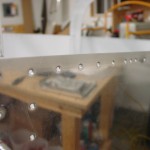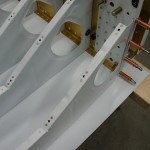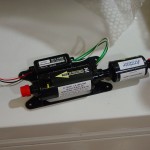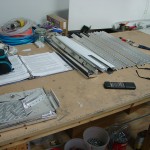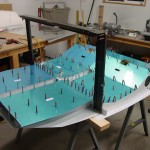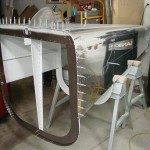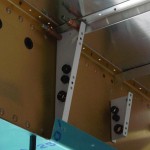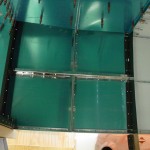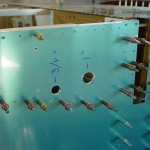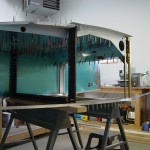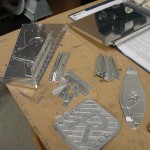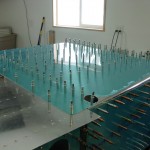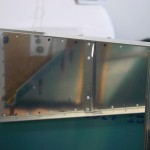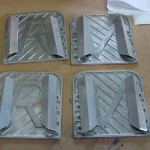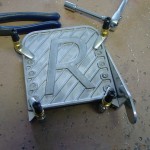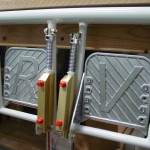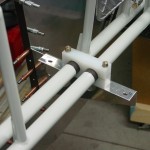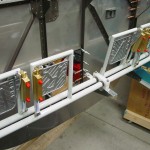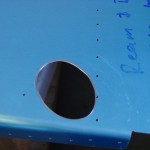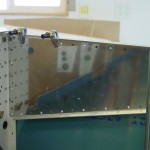Putzing around
Went to the shop after fixing the garage door opener (new drive gear & bushings have it running smoothly again) with the intent of figuring out some antenna doublers, thinking that it would be a good idea to install them while access to the fuselage is easy for dimpling, deburring, and riveting. Stood around staring at it for awhile, pondering, and made no progress on that — wondering if now is really the time, or not. My proposed list of antennas:
- VHF Com 1 and 2 (Comant CI-122 bent whips): install under removable portion of seat pans, behind wing spar, left and right outermost bays of fuselage
- VOR/LOC/GS (Comant CI-157P or CI-158C “cat whiskers”): bottom of tailcone, just behind fwd edge of aft bottom tail skin
- Transponder (DeltaPop): near centerline of tailcone, somewhere aft of F-706 bulkhead [must be +3' from transponder itself]
- ADS-B (DeltaPop): right side fwd fuselage, near front fuel vent [must be +4' from transponder antenna]
- GPS (whatever 430W specifies): top side of fuselage aft of F-706
- GPS2, GPS3 (?): under cowling or aft canopy window?
- ELT (whatever is specified): undecided, perhaps top of fuse or along roll bar
- APRS (VHF com or Loran antenna?): undecided, perhaps opposite of ADS-B, or in a wingtip
Lots of stuff to think about. The two of these where access would be most restricted in the future would be the transponder and the VOR, as they are aft of the cabin area, and perhaps the VHF comms. I’ve looked all over the web and seen many different ways of mounting antennas: some use no doubler, some use a “floating” doubler secured only by the mounting bolts of the antenna itself, some rivet a flat doubler to the skin, some use a flanged doubler riveted to the skin, and some tie a doubler into nearby structure (either with or without riveting to the skin as well). The latter ones seem sturdiest, but are they overkill? I’m probably making this far more complex than it needs to be, but it seemed that this would be the ideal time to put these in, if they were to be riveted to skin and/or structure.
With all that indecision rolling about, I found something easy to do, even though it’s not needed for awhile: I laid out and cut the lightening holes in the seat back supports, and marked their flanges for trimming. And, I drilled a 1/4″ hole in the left side of the 705 bulkhead, just under the longeron, for routing of the static line. Whee.
Hours: 0.5 | Posted in Cabin & Interior | Comments Off
